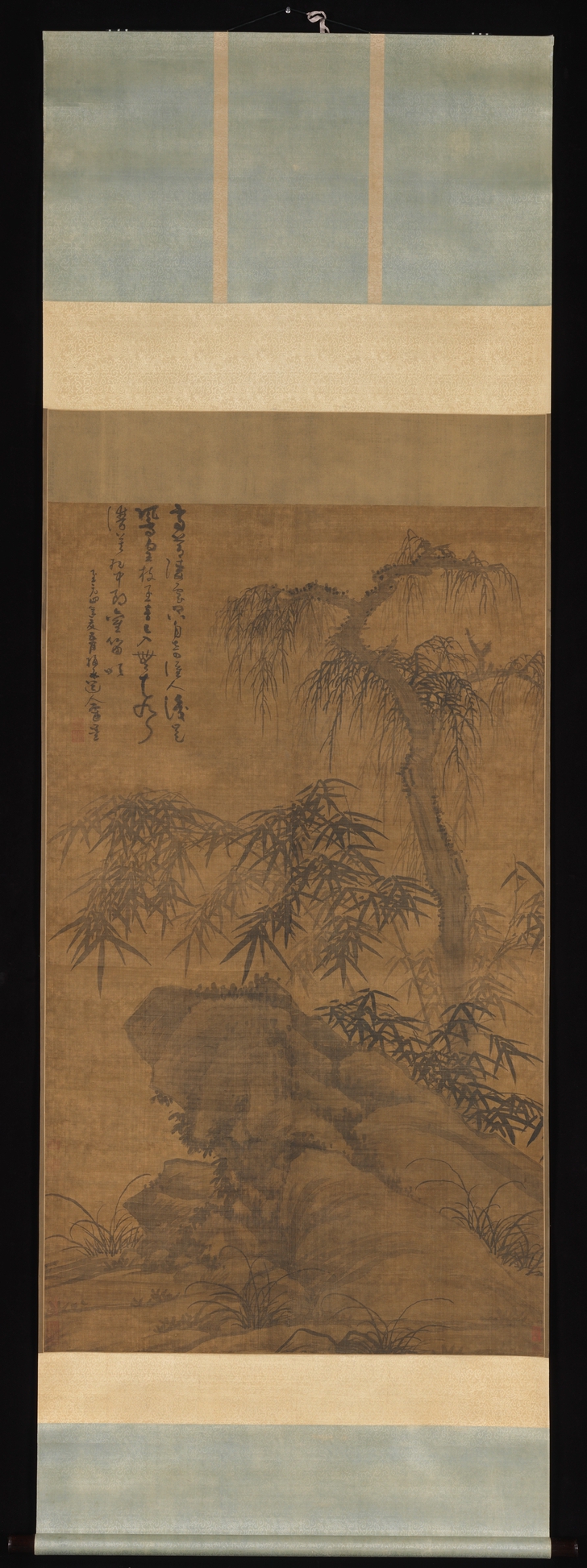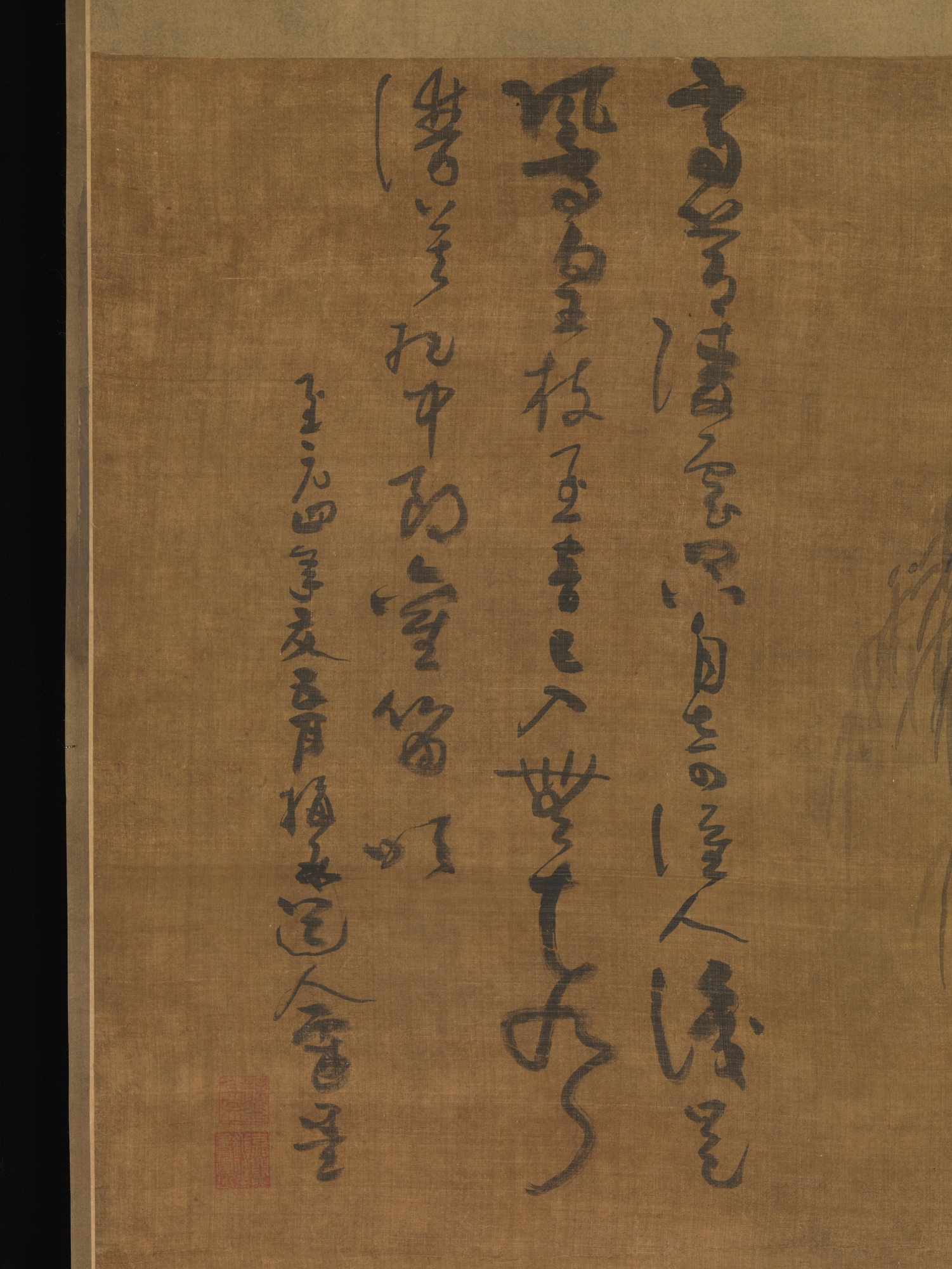Bamboo, old tree, and rock
Wu Zhen Chinese
This painting shows Wu Zhen's creative adaptation of the "old tree, bamboo, and rock" genre first canonized by eleventh-century scholar-artists. The painting's large scale and use of overlapping forms and graded ink tones to create an illusion of recession, and of rich, wet ink to evoke the appearance of foliage after a drenching rain, recall the descriptive naturalism of Song-dynasty precedents. But Wu tempered this naturalistic approach with a new calligraphic assertiveness inspired by the work of Zhao Mengfu (1254–1322). Bamboo leaves have been reduced to a calligraphic formula of repeating, pattern-like clusters, and the texture strokes and foliage dots used to describe rock surfaces have become emphatic mannerisms derived from the tenth-century masters Dong Yuan and Juran.
In his later years, Wu Zhen specialized in bamboo painting, but even here, in his earliest extant depiction of bamboo, the artist's admiration for this plant is evident, particularly in his poetic inscription:
Tall stalks pierce the clouds.
Perhaps you find it strange,
Not recognizing the wings of a phoenix.
A pure sound enters the realm of the soundless,
Do not let Zhonglang blow his long-necked flute.
Due to rights restrictions, this image cannot be enlarged, viewed at full screen, or downloaded.
This artwork is meant to be viewed from right to left. Scroll left to view more.




